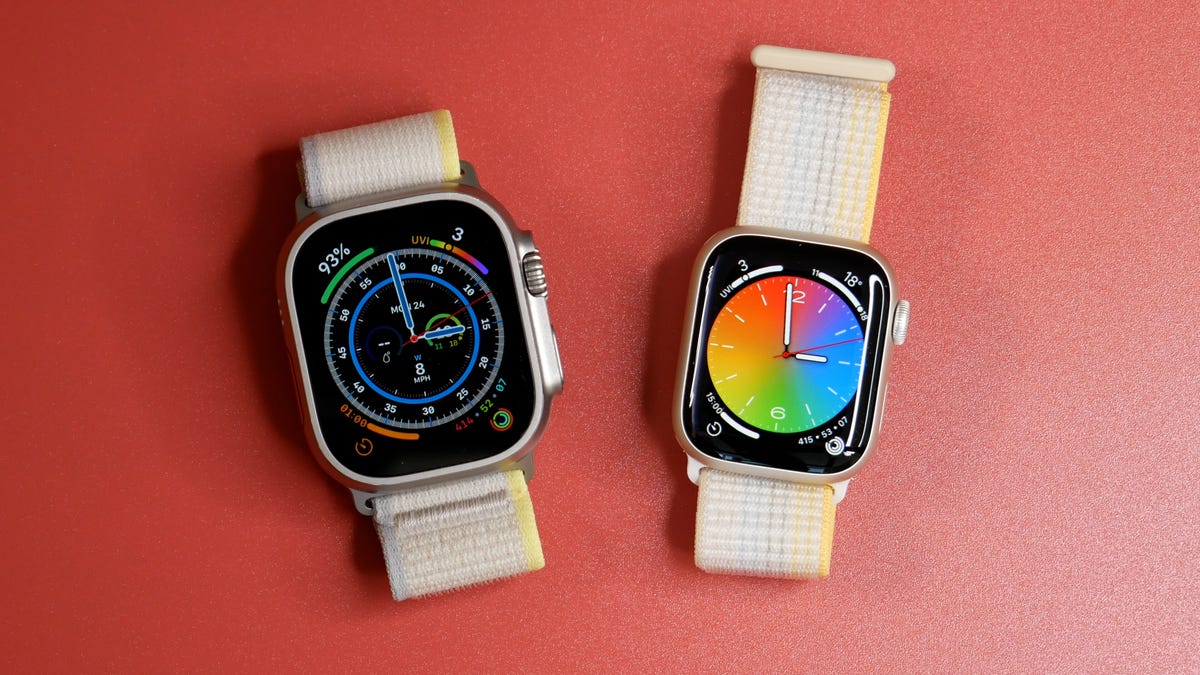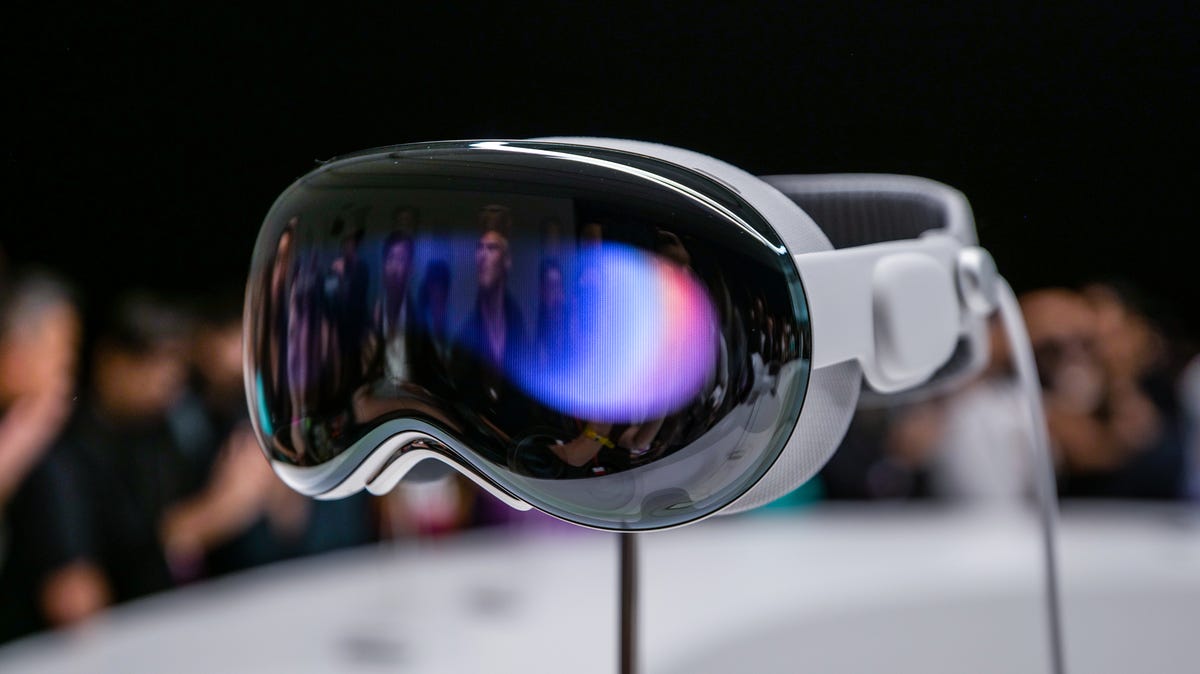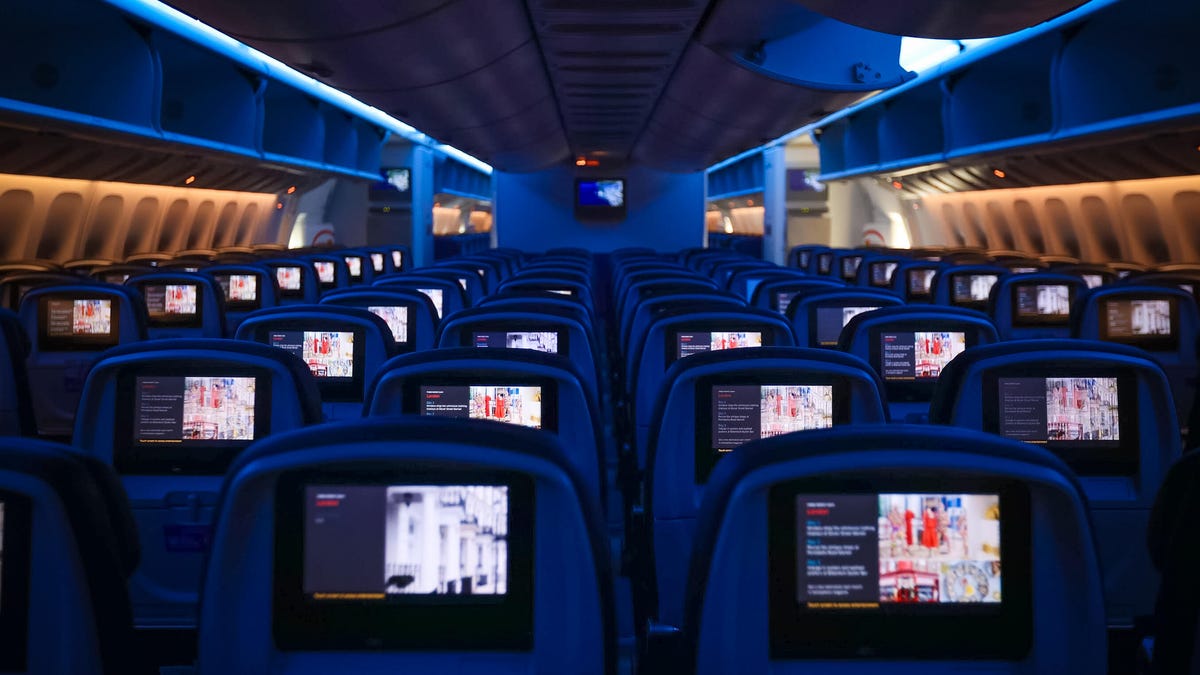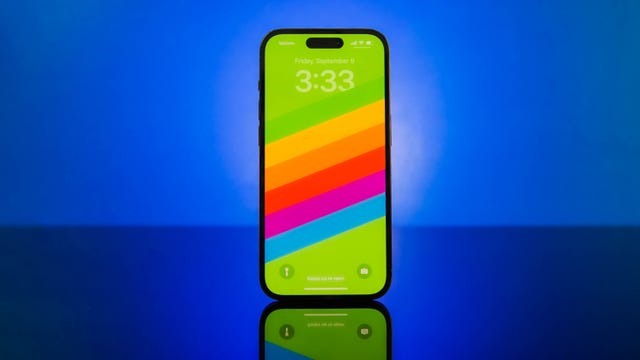Technologies
Apple Event 2023: iPhone 15 Launch and Everything Else We Expect to See on Sept. 12
We could see the iPhone 15, Apple Watch Series 9, Apple Watch Ultra 2 and, maybe, an iPhone 15 Ultra.

In another sign that fall is just around the corner, Apple sent out invites for an event that’s set to take place at the Steve Jobs Theater on Tuesday, Sept. 12, where we expect to see the next iPhone and Apple Watches announced. The annual fall iPhone event has become a cultural touch point heralding the end of summer, right up there with pumpkin spice.
For months, a seemingly endless flow of iPhone 15 rumors have circulated online. Some hint at a rather straightforward round of year-over-year upgrades, while others point to the possibility of a rebranded larger Pro model called the iPhone 15 Ultra. Let’s break down everything you can expect from Apple’s fall event.
Wanderlust or wonderlust?
The event’s invite is characteristically enigmatic, showing an Apple logo made up of tiny dustlike particles. The logo has grooves carved out of it, a bit like the forms you see on windswept sand dunes.
The tagline, «Wonderlust,» is of course a play on the word wanderlust, which means a strong longing for or impulse toward wandering. Does wonderlust mean a strong longing for or impulse toward wondering? Like everyone else, we’re trying to read something into the invite and wondering what it has to do with Apple’s upcoming announcements. Could the grooved cutouts in the logo refer to a less boxy iPhone design? Could the particles refer to improved cameras capable of capturing more detail? Could the colors — metallic shades of gray, blue and even gold — be a reference to the colors of the new iPhone or Apple Watch?
Or is this all just Apple acknowledging the fleeting nature of existence? No idea. But I expect the iPhone 15 Pro will be the headliner.
The iPhone 15 and 15 Plus
As in the iPhone 14 series, there will likely be four models in the new iPhone lineup: the iPhone 15, 15 Plus, 15 Pro and 15 Pro Max. According to Bloomberg’s Mark Gurman, who has a solid record when covering Apple leaks, the iPhone 15 and 15 Plus will basically be a repackaged iPhone 14 Pro without the telephoto camera or stainless steel body.
The new phones would inherit a 48-megapixel main camera and the A16 chip from the 14 Pros. On the outside, the two phones will trade their display notches for the Dynamic Island cutout that also debuted on the 14 Pro and 14 Pro Max.

Despite the addition of the Dynamic Island, don’t expect any other changes to the screen. Display analyst Ross Young said in a September 2022 post on X, formerly known as Twitter, that he isn’t expecting base iPhone 15 models to get a high refresh rate like Apple’s Pro iPhones.
And according to a May report by ChargerLab, a battery and charging specialist website with a steady track record for rumors, all four iPhone 15 models will support 15-watt wireless charging using the Qi2 open standard announced earlier this year. If this turns out to be true, it could mean the iPhone 15 would open up a whole new world of wireless charging devices that don’t necessarily need to be licensed Apple MagSafe accessories.
See also
But the biggest change expected for all four iPhones will be the shift away from the Lightning connector. Likely driven by pressure from the European Union, which passed legislation adopting USB-C as a common charging standard, the iPhone 15 series will have a USB-C port instead of a Lighting port. The last time Apple switched the iPhone’s power port was in 2012, when it debuted the Lighting port on the iPhone 5, which spelled the end of the wide 30-pin iPod connector that was previously used.
It’s a bit hazy how exactly Apple will handle this, like whether USB-C will be on all new iPhones globally or just in the EU. But it’s highly likely that all new iPhone models will be sold with a USB-C port for the foreseeable future.

The iPhone 15 Pro and 15 Pro Max
Of everything Apple’s expected to announce, the iPhone 15 Pro and 15 Pro Max could have the biggest changes. According to Bloomberg’s Gurman, stainless steel is gone, and instead the Pro model’s frame will be made from titanium. The shift in materials could help reduce the overall weight of each phone, which is hefty even without a case.
The iPhone 15 Pro and 15 Pro Max will likely get a new chip called A17 that features a supertiny, 3-nanometer processor, Apple’s smallest silicon to date. Around the front, the two phones will likely have thinner display bezels.

The Pro models’ biggest change will be the USB-C port, which in a break from the regular 15 and 15 Plus could support faster data speeds for things like transferring files and ProRes video files.
The iPhone 15 Pro Max may get a new 6x optical telephoto camera. Ming-Chi Kuo, a noted Apple analyst with TF International Securities, predicts the iPhone 15 Pro Max will have a horizontal mounted periscope lens and camera unit inside the phone’s body, similar to ones in the Pixel 7 Pro, Galaxy S23 Ultra and Sony Xperia 1 V.
Doubling the native optical zoom from 3x to 6x should enable you to capture zoomed-in photos with better detail, resolution and dynamic range compared with the 6x digital zoom on a current iPhone 14 Pro.

Kuo’s report also hints at both Pro models having solid-state volume and power buttons, which would further differentiate them from the regular 15 and 15 Plus. The buttons wouldn’t be mechanical and would be more akin to the touch sensitive area that debuted on the iPhone 7 and acts like a «home button» thanks to some clever haptic feedback. Back in 2018, the HTC U12 had solid-state buttons instead of mechanical ones; however, the experience using them wasn’t great.
There are a couple of rumors that have been circulating despite being a bit dated or unlikely. The first is that the iPhone 15 Pro Max may be rebranded as the iPhone 15 Ultra. Bloomberg’s Gurman mentioned the possibility nearly a year ago, but that should be taken with a grain of salt since more recently Gurman hasn’t brought it up.
Another up-in-the-air rumor comes by the way of MacRumors, which found code in a beta version of iOS 17 that describes functionality for an action button like the one on the Apple Watch Ultra. Such a hardware addition would be a first for Apple, and the iPhone’s action button would be for more-phone-oriented tasks like shortcuts or triggering the camera shutter. We’ll have to wait until the 12th to find out.
Apple Watch Series 9 and Apple Watch Ultra 2

In a less ambitious update, it seems the next regular Apple Watch will likely be a relatively modest year-over-year iteration of the Apple Watch Series 8. The Series 9 could come in a new color. As reported by MacRumors, based on a post by X/Twitter user ShrimpApplePro, the Apple Watch Series 9 might come in a new pink color.
The Series 9 will likely be powered by a new S9 chip, which Bloomberg’s Gurman, posting to his Power On Discord channel back in May, described as bringing improvements to performance and efficiency. That’s another way of saying the battery life might be better.
The Apple Watch Ultra could see a second-generation version. The rugged watch debuted last year, and a new version could bring a faster chip and come in a black titanium finish, according to an X/Twitter post by ShrimpApplePro. A black version of the Ultra could look amazing!
All right, let’s talk about everything else.
Potpourri and wrap-up

The AirPods case could see a new version with a USB-C connector. iOS 17 and WatchOS 10 will likely get an official release date. And I can’t imagine that Apple would pass up a chance to update everyone on its Vision Pro headset that was announced in June at WWDC.
Obviously, until Tim Cook and crew walk onto that stage in the Steve Jobs Theater and make their announcements, we won’t know anything for certain.
Technologies
Can Chemicals Turn My Orange iPhone 17 Pink? Here’s What I Found Out
There are reports that some cosmic orange iPhone 17 Pro handsets are turning pink. I threw chemicals at my iPhone to see what would happen.

A recent Reddit thread suggests that it’s possible for a cosmic orange iPhone 17 Pro to turn vibrant pink. As PCMag’s Eric Zeman noted, it’s likely that the phone has been discolored by cleaning substances that affected the finish, turning it from vibrant orange to a wild hot pink. Sure, this might technically be a fault, but in all honesty I love pink phones and the idea of a hot pink iPhone 17 Pro filled me with joy. So I wanted to see if I could test the theory and see just what color-changing effects various household cleaners might have on my phone.
It’s important to note here that the iPhone 17 Pro I used was bought by CNET for the purposes of testing. Had I paid over $1,000 of my own money I wouldn’t be so reckless in smearing it with chemicals that could potentially irreparably harm it. And you shouldn’t either. If you need to clean your phone, do it safely. Disclaimer aside, let’s dive in.
The chemicals
I bought two chemicals to test this out. Zeman explains that it may be oxidation that caused the color to change and that hydrogen peroxide could do this. I couldn’t find this over the counter in the UK, so I instead bought an «oxy-active» stain remover spray that, among other things, contains «oxygen-based bleaching agents» which sounded ideal. Apple also clearly states «don’t use products containing bleach or hydrogen peroxide» on its support page so, naturally, I bought some thick bleach too.
Oxy application
I started by spraying the oxy cleaner on a microfiber cloth until it was noticeably wet from the liquid and then liberally applied this all over the rear of the iPhone. The Reddit user with the affected phone showed that it only affected the metal parts, not the glass back panel, so I made sure to focus my attention on the sides and camera bar.
With the phone well and truly doused in chemicals that have no business being anywhere near a phone, I left it to sit and think about what it had done for 30 minutes — after which time I wiped it dry and took a close inspection. Disappointingly, my phone was still factory orange, rather than «what the hell have you done to your phone» pink. Time to move on.
Bleach blast
I opened the bleach and trying hard not to think about my days as a middle school cleaner, applied a liberal blob of the stuff to a cloth and smeared it over the defenceless phone, concentrating again on the metal areas. I definitely should have worn protective gloves for all of this so please make sure you take better care of yourself than I do if you do anything with bleach.
Again, I gave it a 30-minute settling in period before cleaning it off and inspecting the results.
The phone remained as orange as ever, looking as box fresh as it was the day before when it was, indeed, box fresh. The orange color hadn’t changed and now almost 24 hours later there’s still no sign of discoloration of any kind.
Is the pink iPhone 17 real?
I can’t say with any certainty whether the Reddit user’s images of a pink iPhone 17 Pro are real or not. The cuddly human side of me wants to take them at their word, while the journalist in me is sceptical. What I can say with certainty is that putting your orange iPhone into close contact with household cleaning products isn’t going to win you a funky, ultra-rare pink hue that you could sell on eBay for a small fortune.
It’s possible that using pure peroxide could be the thing that does it, but to be honest, if you’re going out of your way to throw industrial-grade chemicals at your phone then you may as well just directly try and dye it. My goal here was to see how susceptible the orange model is to everyday household cleaners such as kitchen cleaner or bathroom bleach — the sort of things it might naturally come into contact with in routine use. And what I’ve found is that, no, it won’t ruin the nice orange color. But it’s probably still not good for your phone.
Technologies
My Teen Loves Her Apple AirPods Pro 2 and You Will Too With This $100 Off Deal for Black Friday
Apple’s AirPods Pro 2 have everything you could want from a pair of wireless earbuds, plus a steep discount.

Black Friday deals: The Apple AirPods Pro 2 are some of the best personal audio gear on the market, even if they aren’t the latest model anymore. Sure, Apple’s AirPods Pro 3 are the newest earbuds in the lineup but the AirPods Pro 2 are still an excellent pick for most people.
They’re an even better buy this week during early Black Friday sales when you can get your hands on a pair of Apple AirPods Pro 2 at a discount. Right now, Walmart is shaving a massive $100 off the AirPods Pro 2, dropping the cost to $139. That’s one of the lowest prices we’ve seen — but we doubt this deal will stick around for long.
Don’t miss any of our unbiased tech content and lab-based reviews. Add CNET as a preferred Google source.
HEADPHONE DEALS OF THE WEEK
-
$248 (save $152)
-
$298 (save $131)
-
$170 (save $180)
-
$250 (save $200)
CNET’s key takeaways
- You can get these amazing earbuds for just $139 right now at Walmart.
- My teenager loves everything about them.
- The sound quality is exceptional.
- The noise cancellation can help give you some peace, even in a busy home.
My 13-year-old daughter loves her music and her privacy, and for years she has wanted a pair of AirPods. They’re not cheap so I’ve only been getting her more budget options, like the Amazon Echo Buds, as a result. These kept seemingly disappearing, though, so I finally ponied up for the AirPods Pro 2.
I picked them up during last year’s sales, and they were definitely well-received. She’s happy, she uses them every day, and she hasn’t lost them yet. The AirPods Pro 2 are currently on sale at Walmart for $139, a nice price for a high-quality pair like these, and one of the lowest we’ve seen.
What about the AirPods Pro 3?
The AirPods Pro 3 weren’t available at the time I bought the AirPods Pro 2, but they were rumored, and I didn’t wait to see what they offered. As CNET’s resident headphone expert, David Carnoy summarized in his AirPods Pro 3 and Pro 3 comparison, the newer model is «significantly improved in the four most important areas: fit, sound quality, noise cancellation and battery life.» They also have heart-rate monitoring, like the Beats Powerbeats Pro 2.
Hey, did you know? CNET Deals texts are free, easy and save you money.
While these are undoubtedly all important things, a lot of people aren’t going to notice the differences or make the most of the new features. With the AirPods Pro 3 being newer, they’re on a smaller sale and are currently available at Amazon for $220, which is $30 off the list price.
Why I didn’t get the AirPods 4 instead
Why did I choose AirPods Pro 2 instead of the AirPods 4 with ANC? First, as I mentioned in another article about a different pair of earbuds I bought, I think sealed, in-ear buds are better than open-design models like the AirPods 4. The seal creates another layer of noise isolation and contributes to superior sound quality, and if you want to pay attention to the world you can always engage ambient sound mode, which Apple calls transparency mode.
Also a factor was that, at the time, Carnoy considered the Pro 2 the best Apple noise-canceling wireless earbuds: «While we’re quite impressed with those new models — and with the AirPods 4 ANC in particular — the AirPods Pro 2 remain arguably the best Apple AirPods you can buy if you don’t mind having silicone ear tips jammed in your ears,» he said.
My daughter uses earplugs all the time to help her sleep, so she definitely qualifies as somebody who’s comfortable stuffing things in her ears. Like her fingers, when I start using words like «sigma,» «skibidi» and «relatable» to try to relate to her.
I asked Carnoy about the Pro 2s potentially not fitting in her kid-size ears and he reassured me that the range of eartips that come with the Pro 2s «now include XS, so they should fit.»
Do AirPods make a great gift?
It took me years to finally understand, but yes, for someone looking for wireless earbuds, AirPods — especially the Apple AirPods Pro 2 — make the perfect gift, regardless of whether you’re a teenage girl.
Join Our Daily Deals Text Group!
Get hand-picked deals from CNET shopping experts straight to your phone.
By signing up, you confirm you are 16+ and agree to receive recurring marketing messages at the phone number provided. Consent is not a condition of purchase. Reply STOP to unsubscribe. Msg & data rates may apply. View our Privacy Policy and Terms of Use.
Technologies
If You’re Flying for the Holidays, This Bluetooth Dongle Transforms In-Flight Movies, and It’s 35% Off for Black Friday
Watch airplane movies just like you would at home with this game-changing device.

Air travel for the holidays can be stressful, especially when winter weather or flight delays force a change of plans, but one perk of flying still remains — watching new-release movies. However, in-flight entertainment on most airlines usually requires a wired set of earbuds. (And the ones the airline hands out are so bad they may as well not even be connected.)
I’d far prefer to use my wireless, noise-canceling AirPods Pro, but they connect only via Bluetooth. There’s a simple tech solution that makes viewing movies on the plane feel more like watching them on your couch.
The AirFly is a simple Bluetooth dongle that allows me to connect my wireless earbuds directly to the airplane’s entertainment system, eliminating the need for adapters or wired workarounds.
It’s become a must-pack item in my travel bag. Since I started using it, I’ve stopped dreading in-flight audio and finally get to enjoy movies on the plane. If you fly often, this little gadget could completely change how you travel. And the base level AirFly SE is 35% off for Black Friday at Amazon.
The AirFly Pro lets me enjoy in-flight entertainment
The AirFly Pro from Twelve South is a minimally designed dongle that allows me to connect to the 3.5mm headphone jack in my airplane seat, enabling me to listen to in-flight entertainment on my noise-canceling earbuds.
All I have to do is pair the AirFly with the Bluetooth headphones I’m using, such as my AirPods Pro, plug the AirFly into the display in front of me, and I’m all set. I don’t even need to use my phone to connect the two devices.
There are several versions of the AirFly: the AirFly SE, which is currently on sale for $26 on Amazon and connects to just one set of headphones, the AirFly Pro at $55, the Pro V2 at $60 and the Pro 2 Deluxe at $70, which comes with an international headphone adapter and a suede travel case.
Hey, did you know? CNET Deals texts are free, easy and save you money.
I use the AirFly Pro, which has been a game-changer for me on flights. I’ve never had to worry about battery life since the AirFly Pro lasts for over 25 hours and can be fully charged in just three hours. I can also pair two separate pairs of headphones to a single AirFly Pro, in case I’m with someone else on a flight and want to watch the same movie or show.
And if that’s not enough, the AirFly Pro also doubles as an audio transmitter, allowing me to turn any speaker with a headphone jack, such as my old car stereo, into a Bluetooth speaker.
The AirFly Pro makes a great gift for any traveler
The AirFly Pro is the perfect present to give to someone who’s planning to travel this year. Besides my Anker MagSafe battery pack, the AirFly Pro has become my most treasured travel accessory when I fly, which is why I consider it one of those can’t-go-wrong gifts.
For more travel gear, here are our favorite tech essentials to travel with and our favorite travel pillows.
Join Our Daily Deals Text Group!
Get hand-picked deals from CNET shopping experts straight to your phone.
By signing up, you confirm you are 16+ and agree to receive recurring marketing messages at the phone number provided. Consent is not a condition of purchase. Reply STOP to unsubscribe. Msg & data rates may apply. View our Privacy Policy and Terms of Use.
-

 Technologies3 года ago
Technologies3 года agoTech Companies Need to Be Held Accountable for Security, Experts Say
-

 Technologies3 года ago
Technologies3 года agoBest Handheld Game Console in 2023
-

 Technologies3 года ago
Technologies3 года agoTighten Up Your VR Game With the Best Head Straps for Quest 2
-

 Technologies4 года ago
Technologies4 года agoBlack Friday 2021: The best deals on TVs, headphones, kitchenware, and more
-

 Technologies4 года ago
Technologies4 года agoVerum, Wickr and Threema: next generation secured messengers
-

 Technologies4 года ago
Technologies4 года agoGoogle to require vaccinations as Silicon Valley rethinks return-to-office policies
-

 Technologies4 года ago
Technologies4 года agoOlivia Harlan Dekker for Verum Messenger
-

 Technologies4 года ago
Technologies4 года agoiPhone 13 event: How to watch Apple’s big announcement tomorrow



